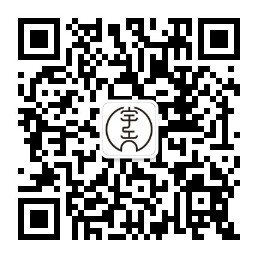1. New energy vehicle power battery "white list" cancelled
On March 24, 2015, the Ministry of industry and information technology formulated the specification conditions for automotive power battery industry, and announced that since May 1, 2015, the enterprise, in accordance with the requirements of the specification conditions, applied online through the "management system for automotive power battery production enterprise". Since November 2015, the Ministry of industry and information technology has released a list of four batches of enterprises that meet the specification conditions, with 57 battery enterprises shortlisted, including Ningde era, BYD, GuoXuan hi tech, Tianjin Lishen and other well-known domestic power battery enterprises. This also directly led to the gradual fading out of the Chinese market of foreign battery enterprises such as LG, Samsung and Panasonic. On the contrary, it greatly promoted the rise and development of domestic power battery enterprises. Ningde era ranked first in the global power battery installed capacity in 2018 with an installed capacity of 23.5gwh.
In June 2019, the Ministry of industry and information technology issued the standard conditions for automotive power battery industry (Announcement No. 22, 2015 of the Ministry of industry and information technology). The first, second, third and fourth batch of enterprises that meet the standard conditions will be abolished at the same time. After the introduction of this regulation, the "white list" of new energy vehicle power batteries, which has existed in the industry for nearly four years, was officially cancelled. This is due to the "white list" of Japan and South Korea power battery giants temporarily leaving the Chinese market is expected to accelerate the return of domestic small and medium-sized enterprises power battery industry may usher in a new round of competition..
2. Subsidy policy for new energy vehicles will be fully withdrawn in 2021
China's new energy vehicle industry began in the early 21st century. Since 2008, new energy vehicles have been in full swing, and China's new energy vehicles are on the track of rapid development. In order to promote new energy vehicles, the Chinese government began to implement new energy vehicle consumption subsidies in 2010, which are aimed at consumers. When new energy vehicle enterprises sell new energy vehicle products, they will settle accounts with consumers according to the price after deducting subsidies, and the central finance will allocate the subsidies advanced by enterprises to production enterprises according to the procedures. In that year, Shanghai, Changchun, Shenzhen, Hefei and Hangzhou launched subsidy pilot projects, with a maximum subsidy of 60000 yuan for each pure electric passenger vehicle. From 2013 to 2015, a new round of subsidies continued to be extended to Beijing, Tianjin and Hebei, the Pearl River Delta, the Yangtze River Delta and other regions. The highest subsidy is still 60000 yuan per pure electric passenger vehicle. In 2015, known as the first year of China's electric vehicle market, the domestic electric vehicle market showed explosive growth under the effect of multiple national policies.
Behind the high subsidy, the event of "cheat compensation" has become an open secret of the industry. Therefore, the state's subsidy policy began to decline by 5% in 2014 and 10% in 2015. In order to make a better transition for enterprises, the release time of the subsidy policy is getting later and later. The fiscal subsidy policy implemented in 2016 was released in April 2015; the fiscal subsidy policy implemented in 2017 was released in December 2016; the fiscal subsidy policy implemented in 2018 was released and implemented on February 12, 2018. The fiscal subsidy policy in 2019 was issued on March 26, 2019, and a three-month transition period from March 26 to June 25 was set up. During the transition period, sales vehicles that meet the technical index requirements in 2018 but do not meet the technical index requirements in 2019 will be subsidized 0.1 times of the corresponding standard according to the subsidy policy in 2018; sales vehicles that meet the technical index requirements in 2019 will be subsidized in 2018 The subsidy shall be 0.6 times of the standard. By 2019, China's subsidy policy for new energy vehicles has declined by 50-60%.
It is understood that the Ministry of industry and information technology has held the drafting kick-off meeting of new energy automobile industry development plan (2021-2035), and started to formulate a new round of industrial development plan.
3. Implementation of "double points" policy for new energy passenger vehicles
On September 27, 2017, the Ministry of industry and information technology and other five ministries and commissions issued the measures for the parallel management of average fuel consumption and new energy points of passenger car enterprises, which will accelerate the development of new energy vehicles and form a three-dimensional situation of traditional fuel vehicles, pure electric vehicles and hybrid vehicles. "Double points" refers to the average fuel consumption points and new energy vehicle points of passenger vehicle enterprises. The accounting subjects of the two points are passenger vehicle enterprises, and the state will conduct the integral accounting for the vehicle enterprises once a year. Among them, for the passenger vehicle enterprises whose annual production or import of traditional energy passenger vehicles is less than 30000, there is no requirement for new energy vehicle integral proportion; for those with more than 30000, the requirement for new energy vehicle integral proportion will be set from 2019. The double points policy puts forward stricter standard requirements for the fuel consumption value of automobile enterprises in the automobile industry, which promotes the transformation of some enterprises whose sales proportion of traditional fuel vehicles is too large, and at the same time, it will vigorously promote the layout and development of new energy vehicles of automobile enterprises.
On July 9, 2019, the Ministry of industry and information technology organized the revision of the measures for the parallel management of average fuel consumption and new energy vehicle credits of passenger vehicle enterprises (Order No. 44 of the General Administration of market supervision of the General Administration of Customs of the Ministry of finance of the Ministry of industry and information technology). On the one hand, the release of this document means that the requirements of the original integral proportion will not change, on the other hand, it reflects the continuation of the policy. In 2021-2023, the integral proportion of new energy vehicles is required to be 14%, 16% and 18% respectively. It will be published in 2024 and later years. According to the draft for comments issued this time, the requirements for increasing the proportion of points by 2% year by year, being able to carry forward the positive points of new energy vehicles, and small-scale enterprises continuing to enjoy the accounting preference seem relaxed, but the accounting method of new energy vehicle points is obviously stricter, the positive points of new energy vehicles settled according to the mileage of endurance are reduced by 32% - 50%, and the requirements for the adjustment coefficient of power consumption are higher. Therefore, we believe that in the future, the integration system will continue to stimulate the enthusiasm of automobile enterprises to produce new energy vehicles and reduce the fuel consumption of traditional vehicles, so as to realize the sustainable development of new energy vehicles.
4. In 2019, the subsidy for new energy vehicles will decline by more than 50% and the marketization process will be accelerated
On March 26, the 2019 new energy vehicle subsidy policy, which is the most concerned by the industry, was introduced. Since the state has determined to withdraw all subsidies in 2021, the subsidy policy in 2019 is one of the core events that the industry pays most attention to.
In 2019, the subsidy policy for new energy vehicles declined by more than 50% as a whole, and the transition period is from March 26 to June 25. During the transition period, for the vehicles that meet the requirements of technical indicators in 2018 but do not meet the requirements of technical indicators in 2019, the subsidy shall be 0.1 times of the corresponding standard of subsidy policy in 2018; for the vehicles that meet the requirements of technical indicators in 2019, the subsidy shall be 0.6 times of the corresponding standard in 2018.
一、 Subsidy for new energy passenger vehicles decreased by more than 50%
Table I subsidy standards for new energy passenger vehicles in 2018
Unit: 10000 yuan

Table 2 subsidy standards for new energy passenger vehicles in 2019
单位:万元

A. Remove the upper limit of 1200 yuan / kWh of electricity subsidy. Under the condition of keeping the upper limit of technical indicators unchanged, the policy raised the threshold of technical indicators substantially.
B. The driving range of pure electric passenger vehicles shall not be less than 250 km. The subsidy for endurance mileage is adjusted to be classified by two gears, and the minimum endurance mileage is required to be more than 250km. Among them, for 250-400km, the subsidy amount is 18000 yuan, and the subsidy is more than 60%; for more than 400km, the subsidy amount is 25000 yuan, and the subsidy is 50%. The overall decline is more than 50%.
C. In terms of energy density of power battery system, it shall be increased from no less than 105wh / kg to no less than 125wh / kg. For 125-140wh / kg, it shall be subsidized by 0.8 times, for 140-160wh / kg, it shall be subsidized by 0.9 times, and for higher than 160wh / kg, it shall be subsidized by 1 times.
D. For the plug-in hybrid passenger vehicle (including add-on program), the driving range under the working condition method shall not be less than 50 km, and the pure electric driving range under the working condition method shall not be less than 50 km. For the plug-in hybrid passenger vehicle under the condition of a, the power consumption of 100 km shall meet the 2019 threshold requirements of pure electric passenger vehicle.
E. In terms of plug-in hybrid vehicles, the fuel consumption (excluding the fuel consumption of electric energy conversion) in state B of plug-in hybrid passenger vehicles with pure electric driving mileage less than 80km under the working condition method is less than 60% compared with the corresponding limit value in the current national standard for conventional fuel consumption, and the vehicle models with ratio between 55% (including) - 60% are subsidized by 0.5 times, and the vehicle models with ratio less than 55% are reduced by 2.2 times To double the subsidy, the subsidy will decline by 55%.



